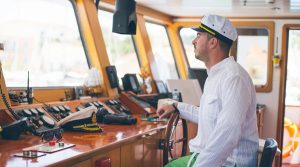When planning a boating adventure, the type of water you’ll be navigating—freshwater or saltwater—can influence everything from the boat you choose to the precautions you’ll need to take. Whether you’re preparing for a leisurely cruise or an action-packed day on the water, understanding these differences helps ensure a smoother experience.
For those considering boat rental in Chelan, which is situated on one of the largest freshwater lakes in Washington, it’s helpful to compare what freshwater boating entails versus saltwater conditions you might find in coastal or ocean areas.
Boat Construction and Maintenance
Freshwater boats are typically built to handle calm inland conditions like those found in lakes or rivers. Saltwater boats, however, need to withstand more challenging environments, such as waves, tides, and corrosion caused by salt.
Materials and hardware used in saltwater vessels are often made with higher-grade stainless steel, sealed electrical components, and reinforced hulls. If you’re used to renting freshwater boats, you’ll notice that saltwater models tend to require more frequent maintenance due to salt’s corrosive nature.
If you’re new to boating, familiarizing yourself with the essential boating terms you need to know, like hull type, draft, and deadrise, can help you understand the specifications and choose the most appropriate vessel for the water conditions.
Navigation and Equipment Needs
In freshwater environments like Lake Chelan, navigation is relatively straightforward. Land is always nearby, and most lakes are mapped with buoys and markers to ensure safe routes. In contrast, saltwater boating—particularly offshore—demands greater navigational skill. GPS, VHF radios, tide charts, and advanced sonar systems are often essential to manage depth changes, currents, and unpredictable weather.
If you’re new to either environment, starting in freshwater provides a more forgiving setting with calmer waters, predictable conditions, and typically fewer technical challenges.
Wildlife and Environmental Factors
Another key difference lies in the type of wildlife you may encounter. In freshwater, you might see fish like bass or trout and local bird species. In saltwater, marine life includes everything from dolphins and rays to larger fish and even jellyfish.
Environmental factors such as algae, salt buildup, and marine growth can affect boat performance over time. Saltwater vessels often require special flushing systems for the engine and must be rinsed after each use to avoid long-term damage.
Safety and Licensing Requirements
Licensing and safety regulations vary by state and body of water, but saltwater boating often involves additional safety gear and certifications, especially if venturing far from shore. Emergency beacons, life rafts, and flare kits are common on ocean-going boats.
For beginners renting a boat for the first time, asking the right questions can help you feel prepared. Whether you’re comparing boat types or exploring alternatives, knowing the questions to ask before renting a jet ski can offer valuable insights that apply to all watercraft rentals, including what to bring, operational limits, and rental policies.
Cost Considerations
Due to the complexity of the equipment and maintenance involved, saltwater boat rentals typically come at a higher cost. They may also include additional fees for cleaning and flushing the motor. Freshwater rentals, especially in well-managed lakeside areas, tend to be more affordable and easier to access, making them a popular option for families and first-time renters.
Conclusion
Freshwater and saltwater boat rentals offer unique benefits and challenges. From construction and maintenance to navigation and environmental factors, choosing the right vessel begins with understanding where you’ll be boating.



